Review: 2014 Toyota Highlander

One day, about a month ago, a vehicle that I had never really given much thought to entered my consciousness quite forcefully. My phone rang, and on the other end was a family member informing me that my sister-in-law had been involved in a serious auto accident. She had been traveling through an intersection when another motorist had run the red light going the opposite direction. It was a hard hit. In fact, the impact was severe enough to flip my sister-in-law’s car was onto its roof. What’s more, her three-year-old son, my nephew, had been in the back seat. They both left the accident totally unharmed.
Her car? A 1st gen Toyota Highlander. So, at least in part, I owe the safety and security of my extended family to the car-based Toyota mid-sized CUV.
Therefore, when I was invited to preview the new-for-2014 Highlander, I was interested to see what the hype was about—after all, companies don’t typically buy Super Bowl ad space and hire The Muppets for cars that aren’t critical to their corporate strategy. Toyota has been employing a two-pronged strategy for this segment for quite some time—the Body-On-Frame, rugged 4Runner, and the car-based, innocuous Highlander. The 4Runner has always appealed more to the male demographic, while the Highlander has been geared toward the ladies of the club. At first glance, it’s plain to see that Toyota has made a concerted effort to “butch up” the Highlander. The grill looks like the 4Runner’s, with a wide, gaping mouth. The doors now bulge out from the side, giving the whole vehicle a much more truck-like appearance. It’s also a little bigger, too—about half an inch wider and about 4 inches longer. Visually, it’s definitely a “love it or loathe it” look. While I’m probably likely to fall in the latter category, I do give Toyota credit for taking a creative risk with the appearance of the car. Where the previous generations of Highlander definitely faded into the background on any highway, this one will stand out.
The interior is where the Highlander really shines. On the XLE and Platinum level trims that I drove, the quality of the interior materials was second to none. It’s clear that a great deal of thought went into the layout of the dash. The XLE and Limited trims offer an eight inch, high-resolution touchscreen in the center, while the LE gets a six inch touchscreen. There is a neat little tray (I’m not really sure what else to call it) that extends all the way from the center of the dash to the passenger door that is ideal for all of your electronic gadgets. In fact, there’s even a portal cut neatly above the USB jacks that you can tidily tuck your cables through. When one drives as many different CUVs and sedans as I do, it’s the little details, the unique touches that stick in your mind. Toyota’s gift here to the OCD among us is what stuck with me.
Another dear friend of mine bought a new 2013 Highlander last year, and her main complaint is the lack of room in the second row. “It’s pretty embarrassing exposing my ass to the entire parking lot as I’m leaning over the cramped seats trying to buckle kids into carseats,” she frequently complains to me. “Don’t you know somebody at Toyota that could fix that?” Well, Beth, I can’t do anything about your 2013, but the engineers at Toyota must have heard enough complaints about the outgoing model that they made significant changes to both the legroom and the hip room of the second and third rows for the 2014 model. In fact, the second and third rows have both been moved back about three inches, and the cargo room behind the third row has also been increased by 34 percent for you Active LifeStyle Triathlete types—more than enough room for a stroller or a golf bag. There’s also heated seating available for the second row on the Platinum package Premium trim level, which is a cool touch.
However, I was most interested in how the thing drives. I daily drive one of the Highlander’s competitors (a Ford Flex), so I was interested to see how they compared. While driving the Limited around the beachside streets of Santa Barbara, the Highlander felt very wide, wide enough to be slightly concerning on some of the side streets. Otherwise, it was charming. Noise reduction was a big concern with the new model, and with 30% more sound deadening and a new windshield, Toyota hit it out of the park. It’s almost too quiet—I felt completely isolated from the environment. However, I can imagine that there would be times where that would be exactly what the doctor ordered. Even with the big Panoramic roof open, noise remained at a minimum. The driver’s seat provides good, comfortable cushioning, but it still uses the lumbar controls that I disliked so much in the Avalon. Braking was surprisingly mushy, so much so that I really had to apply serious pressure on the left pedal when decelerating from speeds above thirty-five or so.
Taking the Highlander into the mountains was a less pleasant experience. There are two engine options available (three if you count the Hybrid, which I did not get any seat time with), a 2.5 liter four cylinder that produces 185 horsepower and 184 ft lbs of torque (LE trim only), and a 3.5 liter six cylinder that makes 270 horsepower and 248 ft lbs of torque (available on all trim levels). With a curb weight of somewhere between 4,100 and 4,500 lbs, depending on trim, even the sixer felt quite underpowered (Toyota, perhaps wisely, did not provide a four cylinder to drive). The six-speed automatic transmission downshifted with even the mildest grade, which would be fine if it downshifted and stayed there. It didn’t. I experienced nearly constant searching and shifting as I went up and down the mountains toward Santa Ynez. The best way to get a consistently pleasant driving experience from the engine/transmission combination was to hammer it in a way that I doubt many CUV drivers are looking to do. This also caused the electric power steering to behave in rather bizarre fashion. I found that I was able to move the wheel several degrees in either direction before the front wheels would react. Again, not a huge concern for most CUV drivers, but when you’re trying to take mountain corners at higher speeds, it’s disconcerting.
The new for 2014 double-wishbone rear suspension was immediately noticeable—the rear end of the car bounced around much less than one would expect from such a large vehicle. In fact, I found myself wishing that Toyota had put a wishbone suspension up front, too. The considerable weight over the nose of the car (weight distribution numbers were not available at the time of this review) made the MacPherson struts work extra hard in corners, and body roll was significant.
Toyota is expecting this refreshed model to be a big hit in the mid-sized CUV segment, a segment that is critical to the success of any automaker. They are looking for the 2014 to sell about ten percent more than the outgoing 2013 did, or over 140,000 units, all of which will be built in Franklin, Indiana. As the only big time competitor in this segment to be totally refreshed, it’s reasonable to expect that they will hit their target. They managed to keep the price tag under $30K for the LE, sneaking in at $29,215 for a FWD four cylinder. However, they’ve also managed to squeak over the $40k barrier for the first time with the Limited, topping out at $41,100 for the AWD model, which is an increase of $1,700 over the outgoing model. There’s also the new Platinum Limited, which comes in at $43,590 (with optional An available Driver Technology Package that includes a Pre- Collision system with Dynamic Radar Cruise Control, Lane Departure Alert with Automatic High Beam Headlights, and Safety Connect), and the Hybrid Limited Platinum, which just flies under the $50K barrier at $49,790. Whew. I would expect that the bulk of Highlander sales will come from the LE Plus and XLE trims, at $34,200 and $37,500, respectively.
My impressions of the Highlander? If you’re not planning to take it up and down any mountains anytime soon, or do any towing with it, it’s right up there with the best in class, including the Explorer and the Grand Cherokee. Despite the new styling, it’s hard to see it taking any business from its stablemate, the 4Runner—they’re still very different vehicles. This new Highlander will do nothing to keep satisfied Highlander drivers from buying another one, and will do a lot to convince happy owners of competitors to take a look. That is, assuming, they can get past that ugly grille.

More by Mark "Bark M." Baruth
Latest Car Reviews
Read moreLatest Product Reviews
Read moreRecent Comments
- SCE to AUX "we had an unprecedented number of visits to the online configurator"Nobody paid attention when the name was "Milano", because it was expected. Mission accomplished!
- Parkave231 Should have changed it to the Polonia!
- Analoggrotto Junior Soprano lol
- GrumpyOldMan The "Junior" name was good enough for the German DKW in 1959-1963:https://en.wikipedia.org/wiki/DKW_Junior
- Philip I love seeing these stories regarding concepts that I have vague memories of from collector magazines, books, etc (usually by the esteemed Richard Langworth who I credit for most of my car history knowledge!!!). On a tangent here, I remember reading Lee Iacocca's autobiography in the late 1980s, and being impressed, though on a second reading, my older and self realized why Henry Ford II must have found him irritating. He took credit for and boasted about everything successful being his alone, and sidestepped anything that was unsuccessful. Although a very interesting about some of the history of the US car industry from the 1950s through the 1980s, one needs to remind oneself of the subjective recounting in this book. Iacocca mentioned Henry II's motto "Never complain; never explain" which is basically the M.O. of the Royal Family, so few heard his side of the story. I first began to question Iacocca's rationale when he calls himself "The Father of the Mustang". He even said how so many people have taken credit for the Mustang that he would hate to be seen in public with the mother. To me, much of the Mustang's success needs to be credited to the DESIGNER Joe Oros. If the car did not have that iconic appearance, it wouldn't have become an icon. Of course accounting (making it affordable), marketing (identifying and understanding the car's market) and engineering (building a car from a Falcon base to meet the cost and marketing goals) were also instrumental, as well as Iacocca's leadership....but truth be told, I don't give him much credit at all. If he did it all, it would have looked as dowdy as a 1980s K-car. He simply did not grasp car style and design like a Bill Mitchell or John Delorean at GM. Hell, in the same book he claims credit for the Brougham era four-door Thunderbird with landau bars (ugh) and putting a "Rolls-Royce grille" on the Continental Mark III. Interesting ideas, but made the cars look chintzy, old-fashioned and pretentious. Dean Martin found them cool as "Matt Helm" in the late 1960s, but he was already well into middle age by then. It's hard not to laugh at these cartoon vehicles.



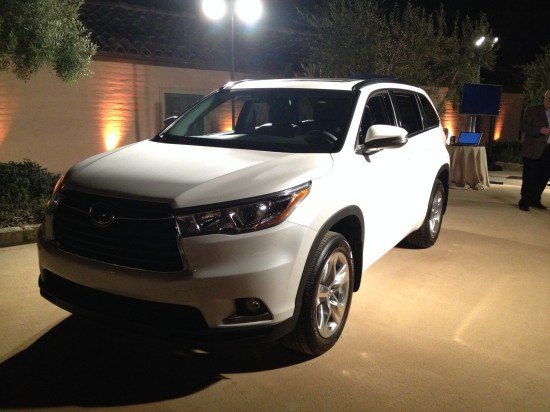




















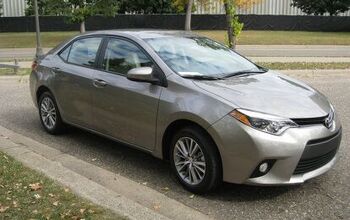
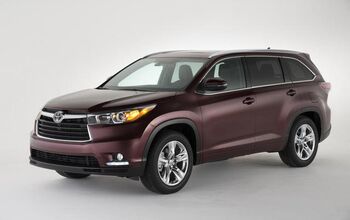
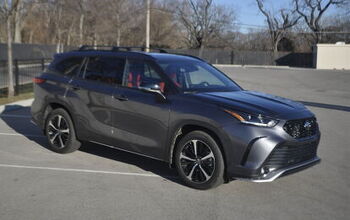
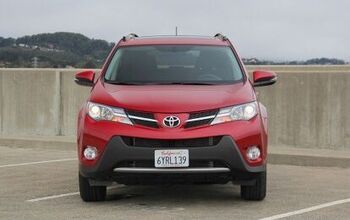










Comments
Join the conversation
It's funny, you say this is a direct competitor to the GC, but in my mind the GC is a step up from this. It's a more serious car, which can be equipped with larger/better engines, and much better interior specifications. I don't want to sound like BTSR, but I think the GC is really a league above.
I really liked the 2nd generation Highlander. Drove an 09 Highlander SUV shopping a while back. Even though it was fairly optioned, relatively spotless and a choice black with black leather, I couldn't get past its mundane looks. While the purchase of a Highlander is certainly not, by any means, a poor choice... I wasn't ready for my AARP card. It drove very nice- solid, of course, and very well mannered (as one would expect from a mid-size Toyota SUV). While the look of the second generation was very buttoned down and conservative, the redesigned model tends topull a little too hard in the opposite direction. The real question is, will the 40-65 year old white-collar managhement types take the plunge on the new one? Oh who am I kidding. It's a Toyota, of course they will.